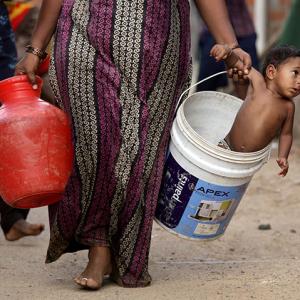Till July 26, kharif crops have been sown in around 68.87 million hectares, which is 6.43 per cent lower than the area covered during the same period last year.

Rain in August will play a crucial role in determining the final output of kharif crops this year.
The southwest monsoon has picked up over central and western India, but it is still below last year’s average.
The average acreage of kharif sowing was below the past five years in several crops.
Farmers often keep sowing till August, but the ideal sowing time for several crops has passed.
So the final yield could be affected for several crops, especially pulses.
According to latest data from the department of agriculture, till July 26, kharif crops have been sown in around 68.87 million hectares, which is 6.43 per cent lower than the area covered during the same period last year.
This is also 7.29 per cent less than the average area covered in the last five kharif seasons.
Major drop in acreage was in the case of pulses.
Till Friday, pulses had been planted in around 8.29 million hectares - about 1.9 million hectares lower than in the same period last year.
The maximum shortfall has been in the case of arhar and urad, the two major pulses grown during the kharif season.
In case of rice, the crop has been sown in around 18.51 million hectares till Friday - about 1.3 million hectares lower than last year.
The drop in rice production has been largely because of lower acreage in Odisha, Chhattisgarh and Assam.
However, there is hope in some parts of the country, as the southwest monsoon is expected to remain vigorous over the next two weeks, India Meteorological Department said.
This should aide in planting of crops and also save the already planted ones from withering.
“In case of soybean, rain in the next couple of weeks will be crucial as the crop will reach flowering stage, though as far as acreage is considered I don’t see any big drop,” said Davish Jain, chairman, Soybean Processors Association of India (SOPA).
Weather officials said in July, the southwest monsoon has been almost near normal witharound 29 centimetres rainfall.
This is big improvement from the 33 per cent deficiency in rainfall till end-June.
“In August, the overall conditions look favourable and - barring minor breaks of five to seven days - we should get normal rainfall,” said Mahesh Palawat, chief meteorologist, Skymet Weather.
He said overall it looked like July would end with cumulative monsoon shortfall of around 14 per cent, while for the full season, the rains could be “below normal” at 90-95 per cent of the Long Period Average.
The water levels in 91-odd reservoirs, too, went up to 40.83 billion cubic meters as on July 25 because of a pick-up in rains but compared to last year, the water was over 37 per cent less.
Photograph: PTI Photo










